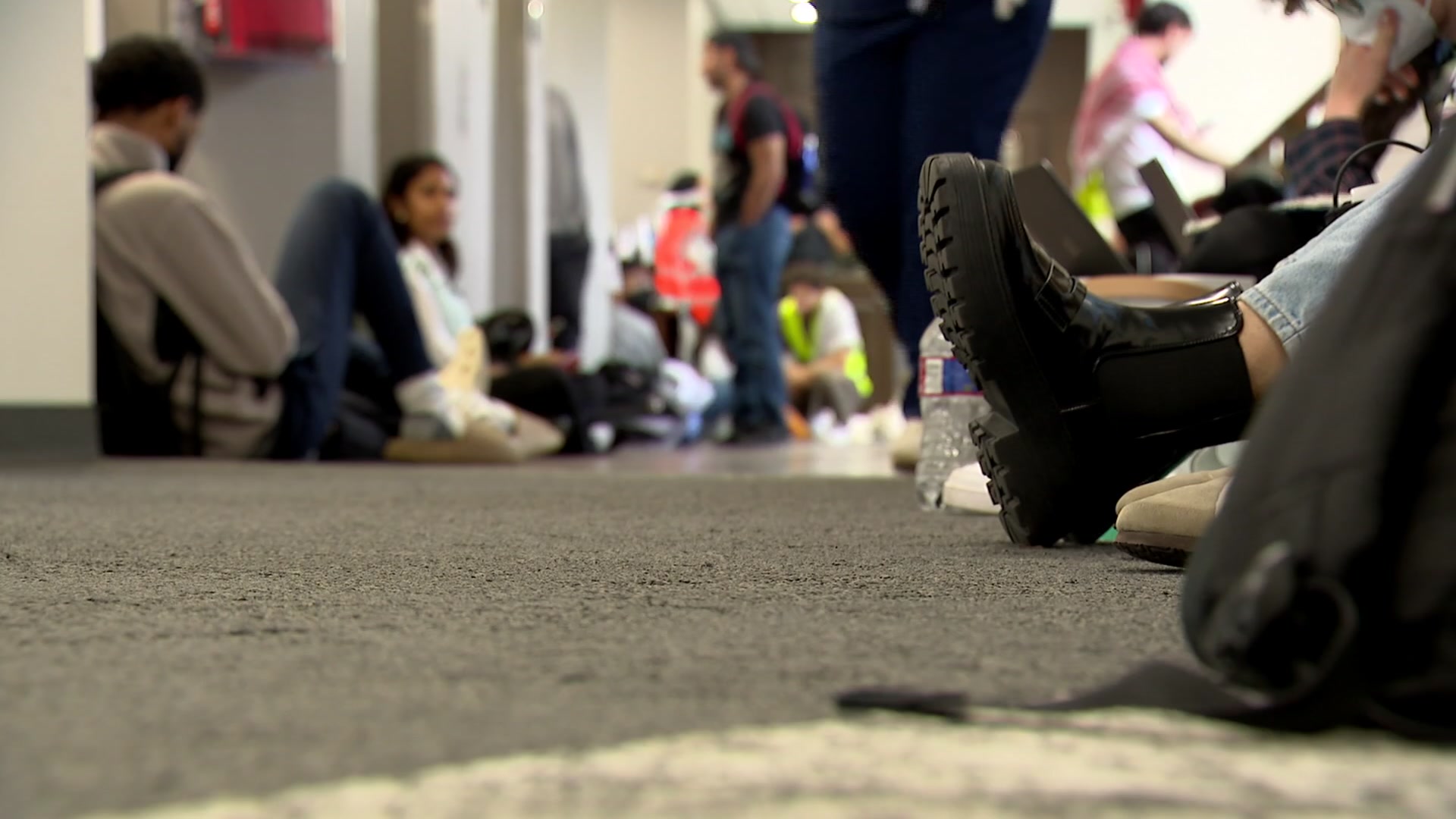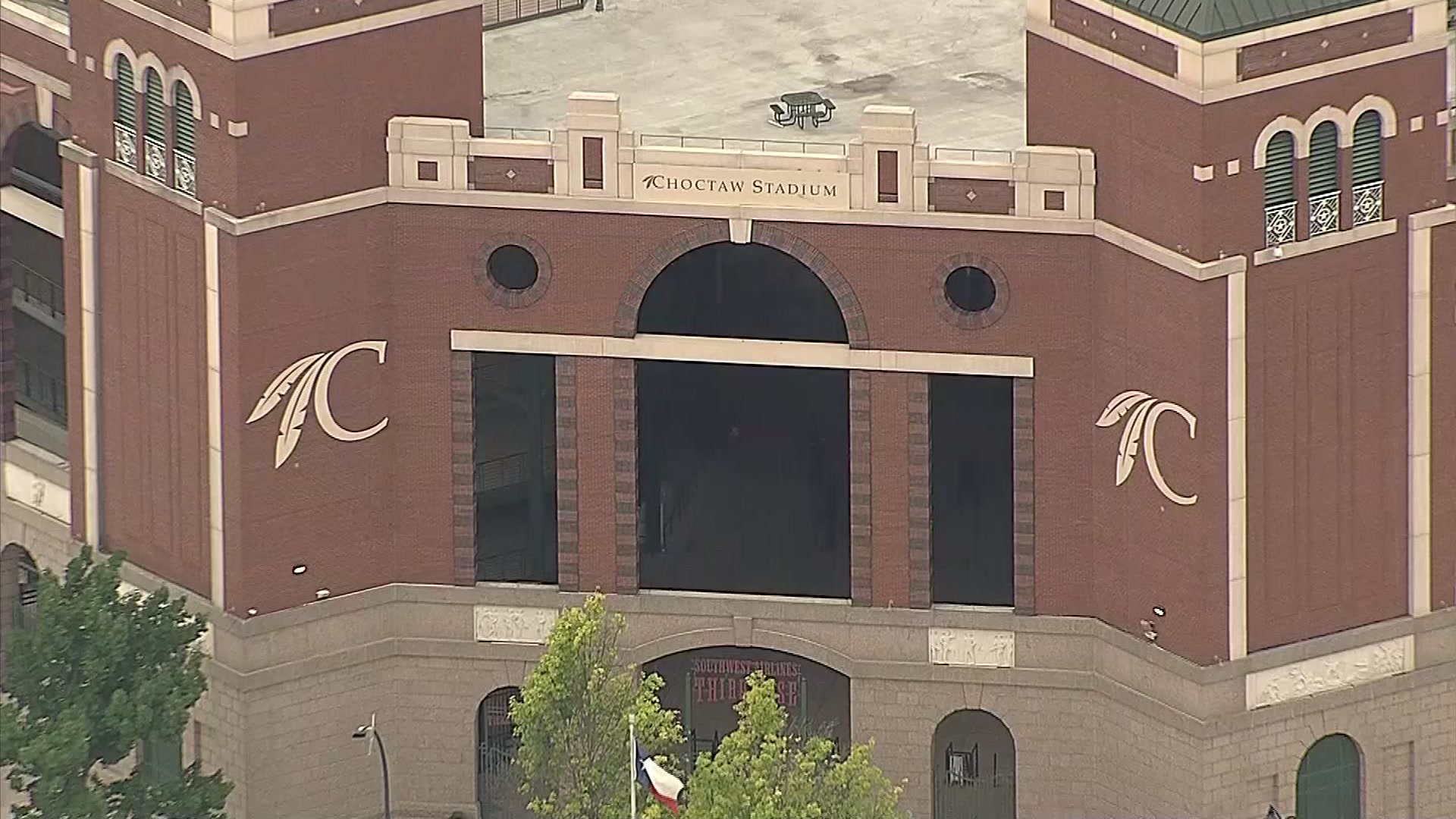Working in a land of cubicles, Diana Thomas said she loves her weekday job.
“I like going in every Monday morning and helping people," said Thomas.
Her primary responsibilities as a Senior Health and Welfare Analyst at CBRE include working with company benefit plan designs, managing day-to-day vendor relationships, company-wide corporate benefit communications and its wellness program.
It is a stark contrast to her weekend job.
“I am a professional sari draper,” said Thomas.
She dresses women in a traditional and functional Indian dress.
“The sari is actually one size fits all,” Thomas explained.
Local
The latest news from around North Texas.
At her sari-draping studio in Irving, she used the mannequin that she practices on to demonstrate a sari’s structure.
“So you’ll see that there’s a skirt, right underneath,” Thomas said while pulling up the bottom of the sari. "The underskirt is considered one of the sari’s anchors. The second is the blouse, which is the only piece that’s sewn to custom-fit the woman wearing it."
Besides the two anchors, the rest of the sari is made up of around six yards of loose fabric.
“You have to pin it, pleat it, tuck it and style it into the drape that you want,” said Thomas.
“This one in particular is very flattering,” Thomas said while referencing the sari style on the mannequin.
People now hire Thomas for events like baby showers, engagement photo shoots and weddings to add her professional flare to their sarees.
On a Saturday morning at a hotel in Fort Worth, we watched as she prepared to drape sarees for guests of an Indian wedding happening downstairs.
“And you’re going to stay in these shoes all day?” Thomas asks in order to gauge the length of the sari she’s about to drape.
We also learned her secret to a perfectly-draped sari: safety pins.
“So this’ll be the second pin. I’m going to come behind you and pin. I’m just gonna grab some pins; two more pins back here and you’re completely done,” said Thomas over the course of one draping.
Safety pins are the Duct tape of sari draping; not all of the pins stay in the sari, some are just used to keep the fabric in place during the draping.
These pins, holding everything together, are also symbolic of why Thomas is committed to keeping the tradition of the sari alive.
“As an immigrant, most immigrants always want to have a tie back to where they came from,” said Thomas.
Thomas was born in Kerala, India, then spent the first five years of her life living in Bombay, which is modern day Mumbai.
“Whenever I thought about ‘what do I want to be when I grow up,’ it was always tied to helping people,” said Thomas.
Like most Indian women, Thomas’s mom taught her how to wear her first sari. Years later, she started helping friends wear their sarees, then friends of friends.
“Somewhere along the way, [I] recognized that there’s a need for this,” said Thomas, and she knew this was a way to help people.
So she started a company, called Draped2Nines, and even went back to India to get certified with further education with Kalpana Shah, a famous sari draper.
Thomas compared her experience with Shah to a boxer getting a lesson with Muhammad Ali.
“There we go, that’s perfect,” said Kavitha Reddy, while getting draped by Thomas.
Thomas’s attention to detail, with modern and traditional styles, leave women feeling, “pretty regal,” said Reddy with a laugh. “It’s fun, it’s a lot of fun.”
Kavitha is perfectly capable of draping her own sari, but said it’s much easier having someone do it for you. Thomas even uses her flat iron, which many women use on their hair, to perfectly crease the sari’s folds after it’s pinned and placed on the body.
To highlight Reddy’s grandmother’s necklace, she asked Thomas to drape her sari with a high neckline.
“Usually, the jewelry we wear (on special occasions) comes from different family members, and so there are a lot of memories that are associated with that,” said Reddy.
“Never have I worn a sari,” said Rhonda Sargent Chambers, friend and co-worker of the bride.
For Sargent Chambers, she’s grateful for the help because she wanted to wear a sari to honor the engaged couple’s heritage.
“So, I want to do it right, but I couldn’t do it,” Chambers said with a laugh.
After receiving a text from the bride, Thomas packs up her gear, grabs the bride’s sari from her closet and heads down the hallway to the bridal suite.
“Today is going surprisingly well,” said Sirisha Reddy about her wedding day.
She noted what she loves about Thomas’s draping and said she’s like a sari miracle worker, especially on a day when there are a lot of last-minute decisions to make.
“It’s so nice that she just walked in and took care of everything,” said Sirisha Reddy.
From the most important days, to any day, Thomas is highlighting the beauty of traditional India in modern-day America.
“I think sometime when you do what you love, what you love turns into a purpose,” said Thomas. “You feel good that you could help someone.”
All while working quietly in the background—just like her trusted safety pins.
“It’s all about the safety pins. Safety pins fix everything,” said Thomas.



